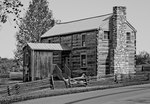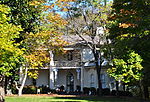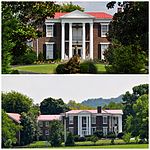Andrew Crockett House

The Andrew Crockett House, also known as the Crockett-Knox House, is a property in Brentwood, Tennessee, United States that was listed on the National Register of Historic Places (NRHP) in 1988. It was built or has other significance in c. 1800, 1821, and c. 1847. The house was built by Andrew Crockett, an early settler. It includes Greek Revival architecture.According to a 1988 study of Williamson County historical resources, the house was built by 1799 and was enlarged later (c. 1850). Crockett received the 640-acre (260 ha) land grant from North Carolina for his Revolutionary War services.This house is one of five log buildings built during 1798 to 1800, during the earliest settling of the area, which survive to today. Others, also NRHP-listed, are: the William Ogilvie House, the David McEwen House, the Daniel McMahan House, and the William Boyd House.
Excerpt from the Wikipedia article Andrew Crockett House (License: CC BY-SA 3.0, Authors, Images).Andrew Crockett House
Wikle Road East,
Geographical coordinates (GPS) Address Nearby Places Show on map
Geographical coordinates (GPS)
| Latitude | Longitude |
|---|---|
| N 35.983611111111 ° | E -86.783888888889 ° |
Address
Wikle Road East 8238
37027
Tennessee, United States
Open on Google Maps








